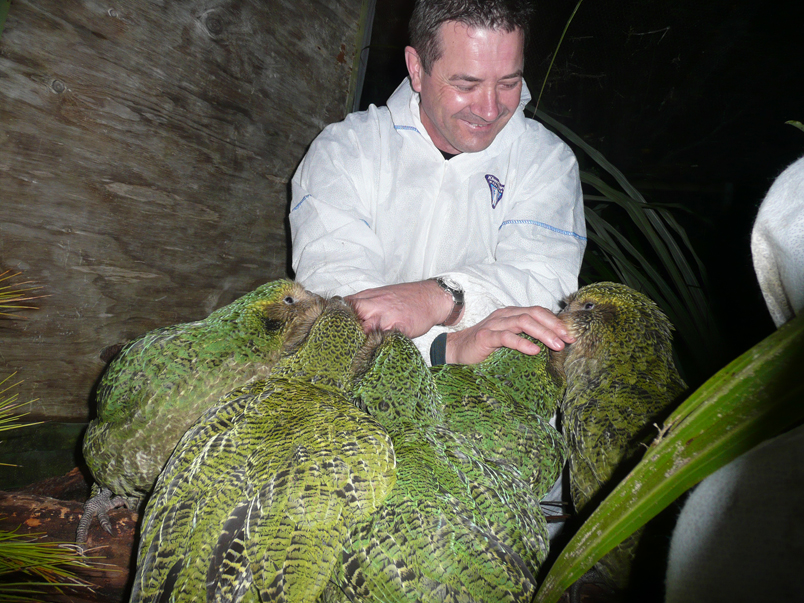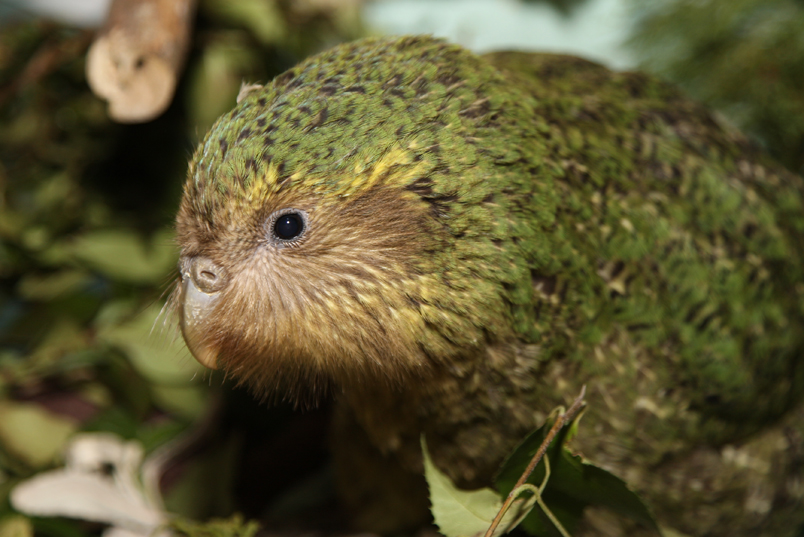News Team member Stephanie Oehler describes how the online "trad-wife" aesthetic fuels the flames of the anti-vaccination movement during the second-largest measles outbreak of the 21st century.
Reviving the K?k?p?: How Genetics is Rescuing an Endangered Bird
Genetic breakthroughs offer a lifeline to New Zealand’s endangered k?k?p? parrot
By Chaya Tong
Like many once populous species, a flightless green bird indigenous to the New Zealand islands has been teetering on the verge of extinction. At its lowest point, the entire population of k?k?p?, a type of nocturnal parrot, dropped to around 50 individuals in total. But unlike every other species whose numbers are plummeting, the k?k?p? (pronounced ka-ka-po) has a secret weapon: modern-day genetics.
A team of conservationists and biologists from around the world have taken the birds under their wing to genetically sequence the entire population. Their findings appeared in a study published August 28 in Nature. The groundbreaking research is notable for being the first to genotype an endangered species.
In total, the researchers sequenced the genomes of 169 k?k?p?, figuring out the DNA pattern of each bird and analyzing genetic differences across the samples. They could then associate these DNA differences with specific traits such as growth rate or susceptibility to certain diseases. Knowing which DNA sequences corresponded with certain traits allowed conservationists to come up with interventions based on the genetics of individual birds, rather than basing treatment on more generalized research on the entire population.
“The idea is to have it as a personalized medicine for k?k?p?,” Joseph Guhlin, a postdoctoral researcher at The University of Otago in New Zealand and first author of the paper, said.

Personalizing breeding for genetic diversity
Because k?k?p? is a critically endangered species, New Zealand’s Department of Conservation has actively bred the birds to increase their numbers. This is where Guhlin’s research transforms from paper to practice. Understanding k?k?p? genetics can help conservationists place birds that are more likely to breed with one another on the same island, reducing inbreeding and maintaining genetic diversity.
Genotypes for the entire species also allow for earlier medical help and waste fewer resources. Many of the remaining k?k?p? live in predator-free sanctuaries. Historically, conservationists would track each bird’s growth against average growth rates for the species for the first 60 days of life. If a bird deviated from that, they would be sent to a vet for intervention.
“Now we can look at what it should be based on the specific parents rather than just a global average,” Guhlin said. “We can have earlier intervention if they naturally grow slower. If they’re not going to be as large, we will not trigger that bit of intervention, which is a waste of resources.”
Earlier intervention can also mitigate diseases – one of the main risks for an already declining k?k?p? population. Using the newly discovered genetic sequences, researchers can predict genetic predisposition to certain diseases and plan accordingly.
“If individuals were more susceptible they could be moved to a different island, or if individuals are susceptible but more likely to survive, we could actually move them to [that island to] build up their immune system,” Guhlin said. So if a new disease appeared in the population, research teams could genetically track it and isolate it in the population, saving the rest of the species from falling ill.
Recruiting a global effort
Remarkably, it was a global effort to save this tiny indigenous green parrot on the New Zealand islands. Collaborators from the UK, US, and Germany, as well as New Zealand, worked over Zoom and email. As the pandemic raged in the background, preventing people from flying out to the islands, researchers continued their work online.
K?k?p? researchers also built their research off of past studies such as an American study called the Vertebrate Genome Project, essentially a working database for 388 species around the world. Researchers on the Vertebrate Genome Project are aiming to build a phylogenetic tree of all vertebrate lineages. Aarang Rhie, an author of the Vertebrate Genome Project study and staff scientist at the National Human Genome Research Institute, explained that her team is interested in “the evolutionary aspects from the vertebrates, and [studying the] important phenotyping traits that are also relevant to human health.”
Rhie cited the example of her neuroscientist colleagues who wanted to study vocal learning. He decided to use birds as his model organism, or an example of human traits in an animal, to investigate tone deafness in humans and used genetic information from different birds from the Vertebrate Genome Project as his comparison.
But while most genomic work has focused on humans and more well-known animals, Guhlin’s research shows that genotyping is important for all species, especially this fuzzy lime-green parrot.
The backers of the project “are investing to bring the species back from the brink of extinction,” he said. “This is another way to expedite that process and safeguard against future problems.”

Rhie said that genotyping endangered species provides more research material on that species that can result in intervention.
“The biggest problem with those highly endangered species is because the sample size of the population is so small, there’s a higher chance they will have inbreeding,” Rhie said. “The more genomic diversity you have, it’s more likely that that species can survive.”
Guhlin says he plans to continue working on the species to ensure its future. There are other questions about k?k?p? genetics that remain unanswered — for example, whether genetics play a role in the male-to-female offspring ratio. Guhlin is also currently working on a GitHub formula to help other researchers run statistics when they’re genotyping other endangered species. He hopes the recent k?k?p? study is just the beginning. Other species could use a scientific savior.
“I’m hoping it sets a foundation for future conservation work,” he said. “I want to say gold standard, but really, I want everyone to come in and do better than we have.”
